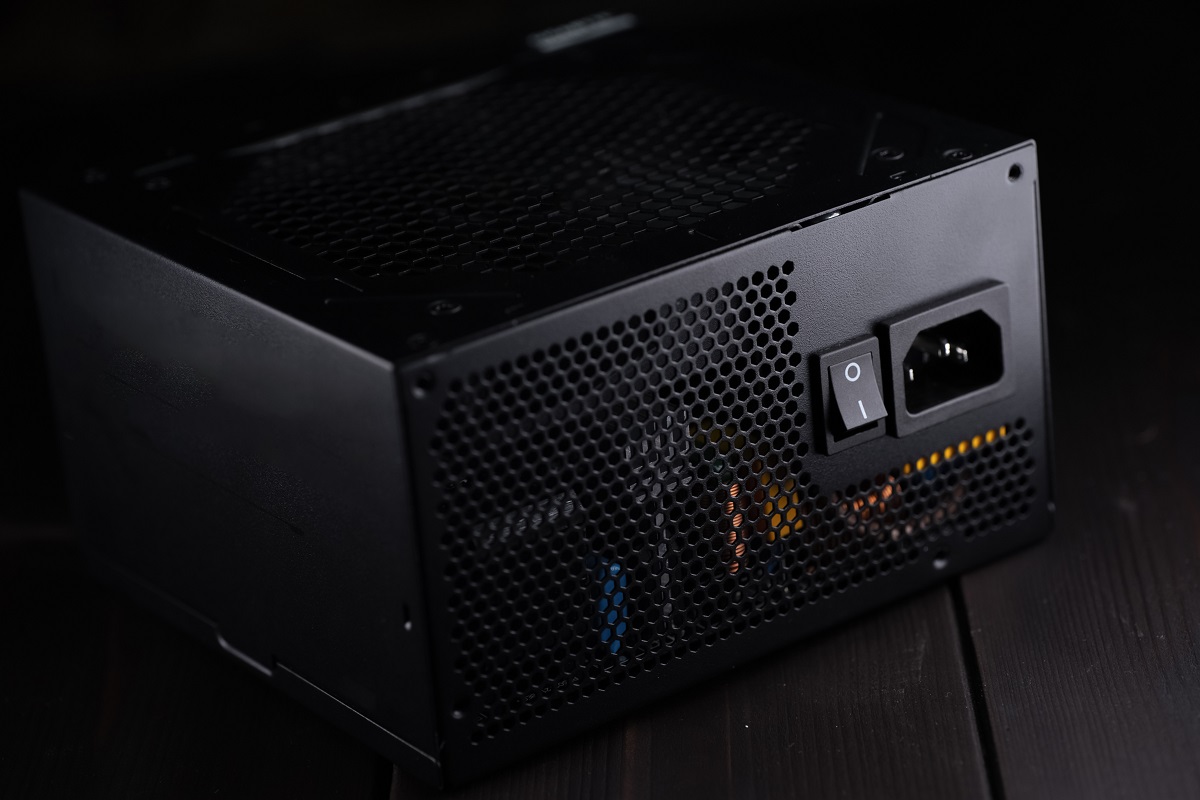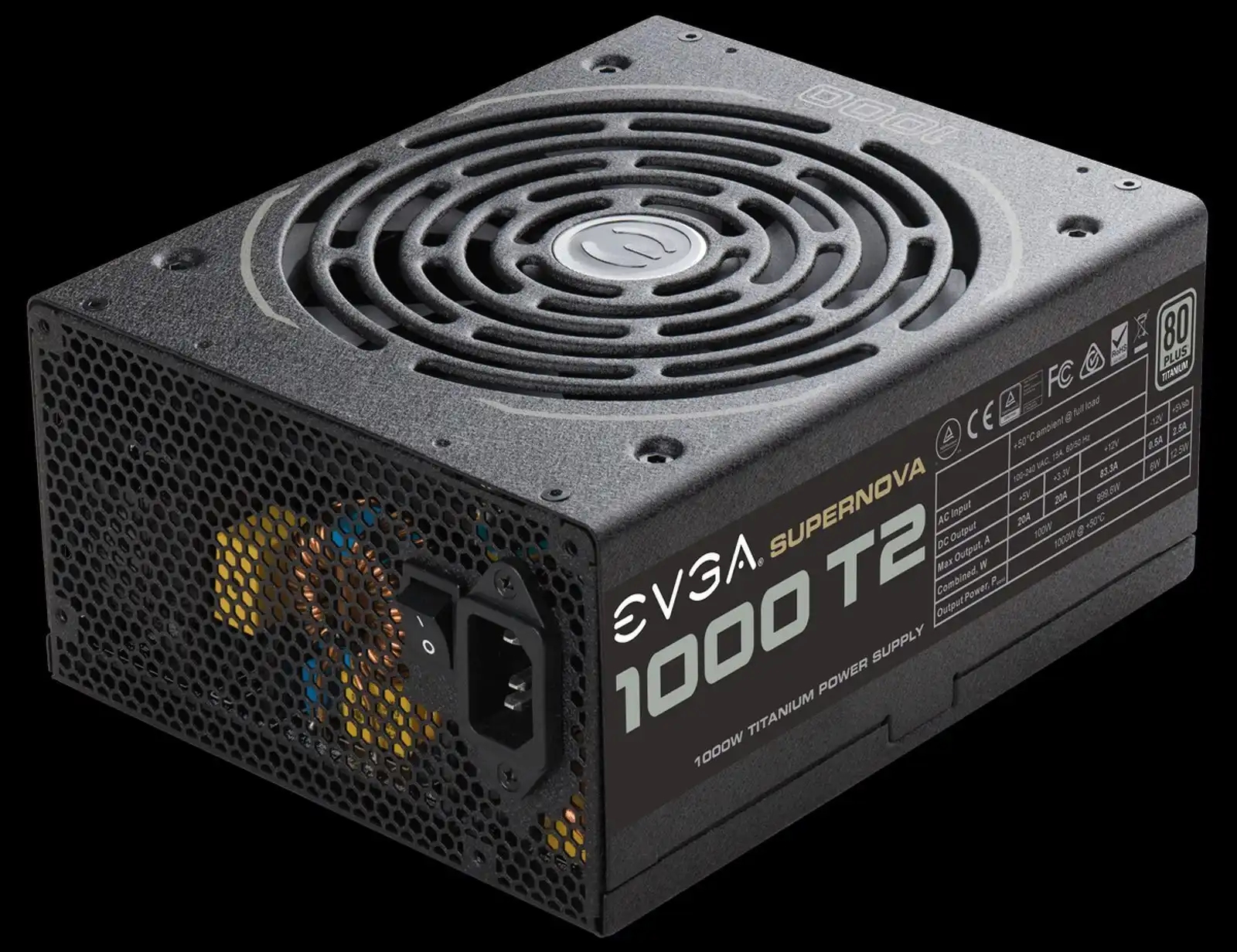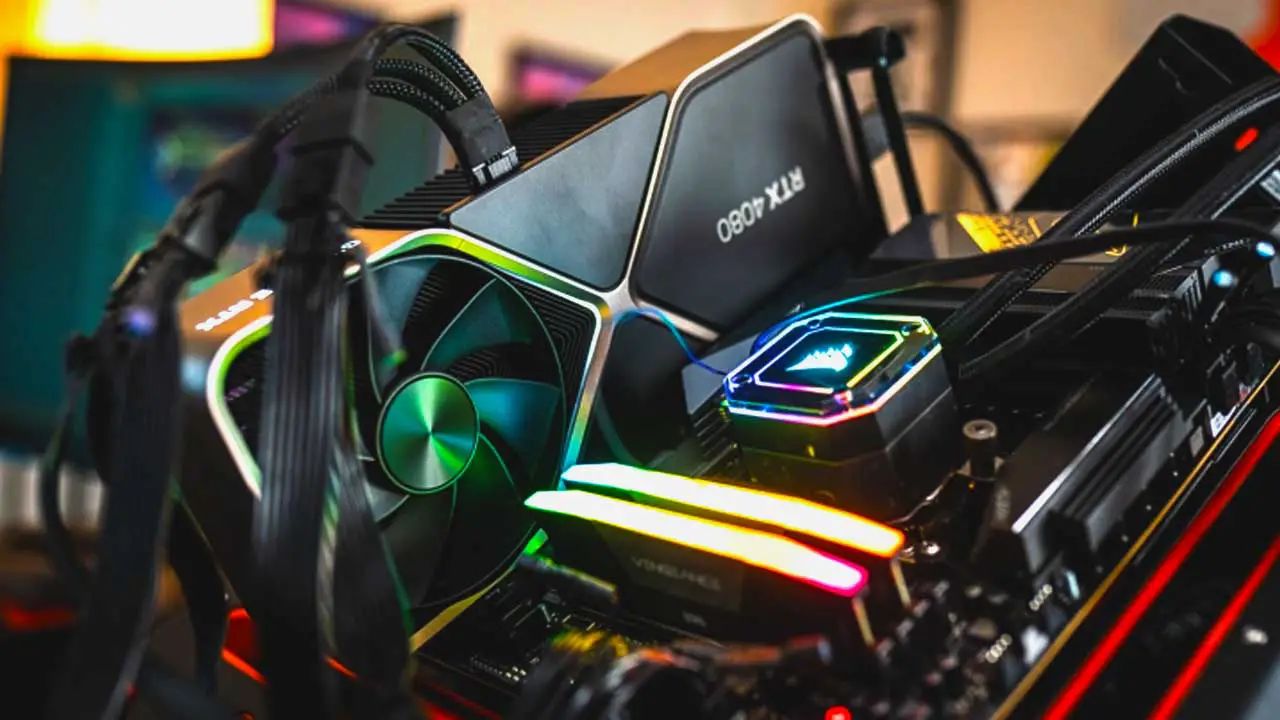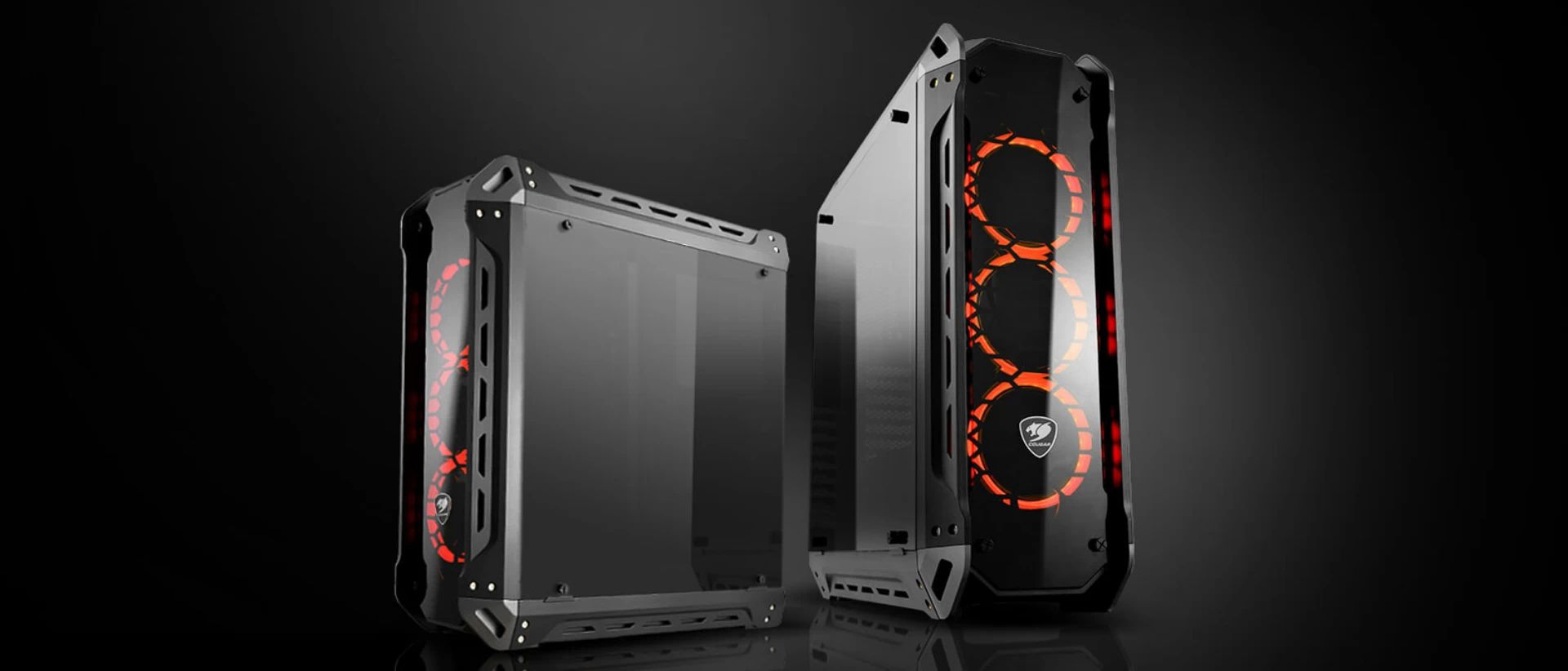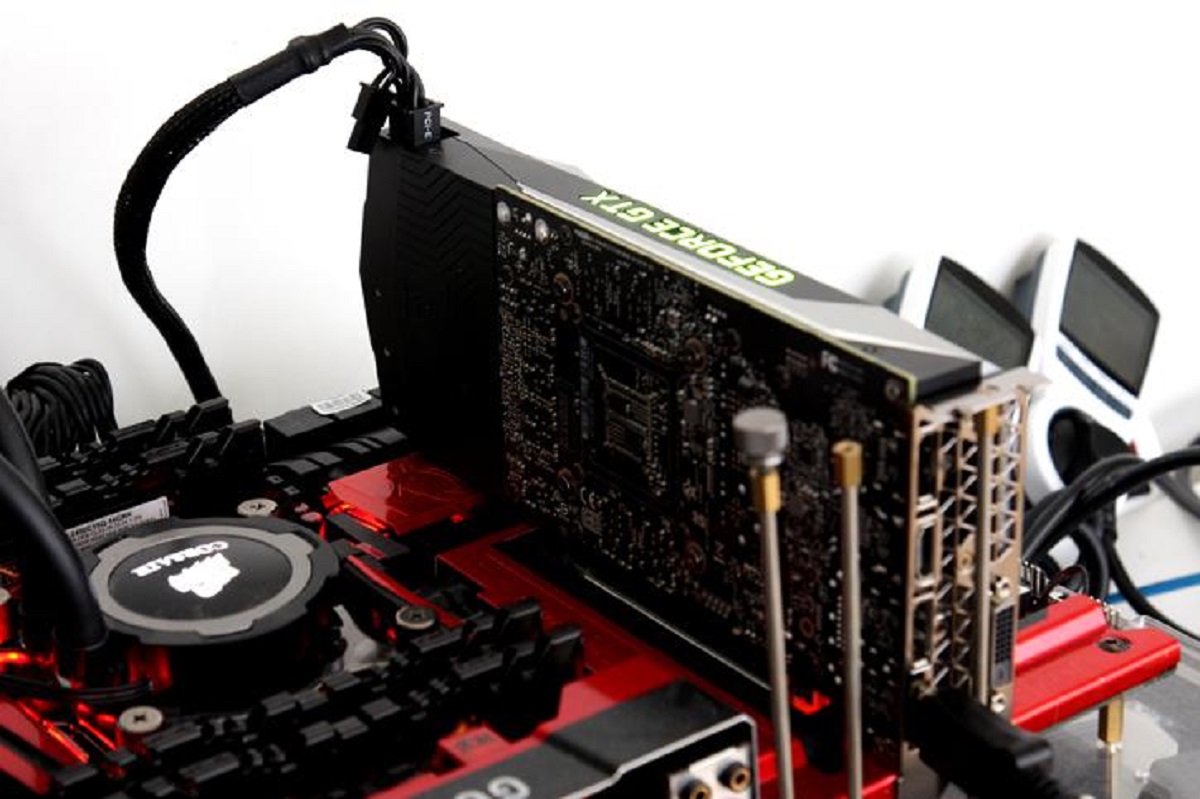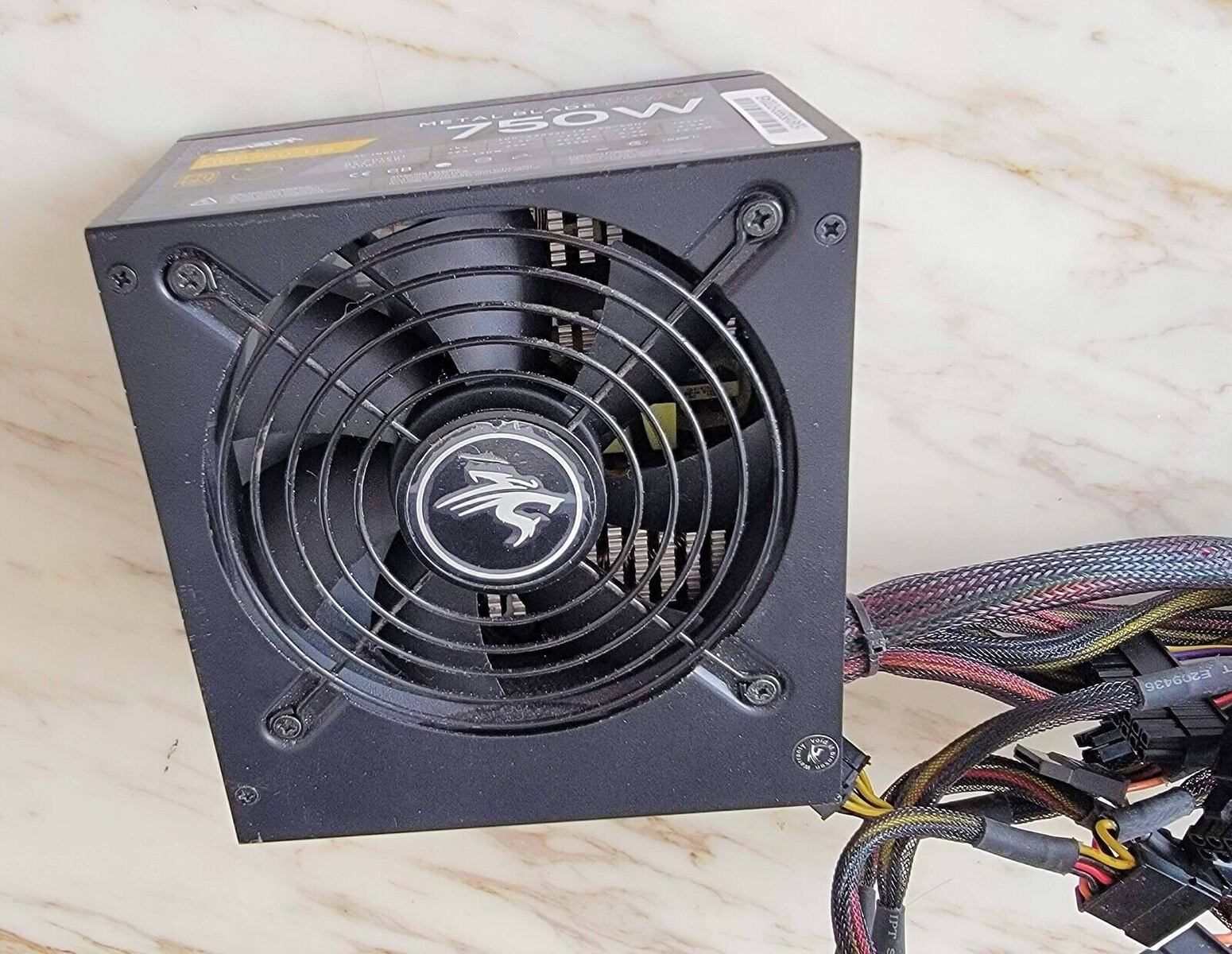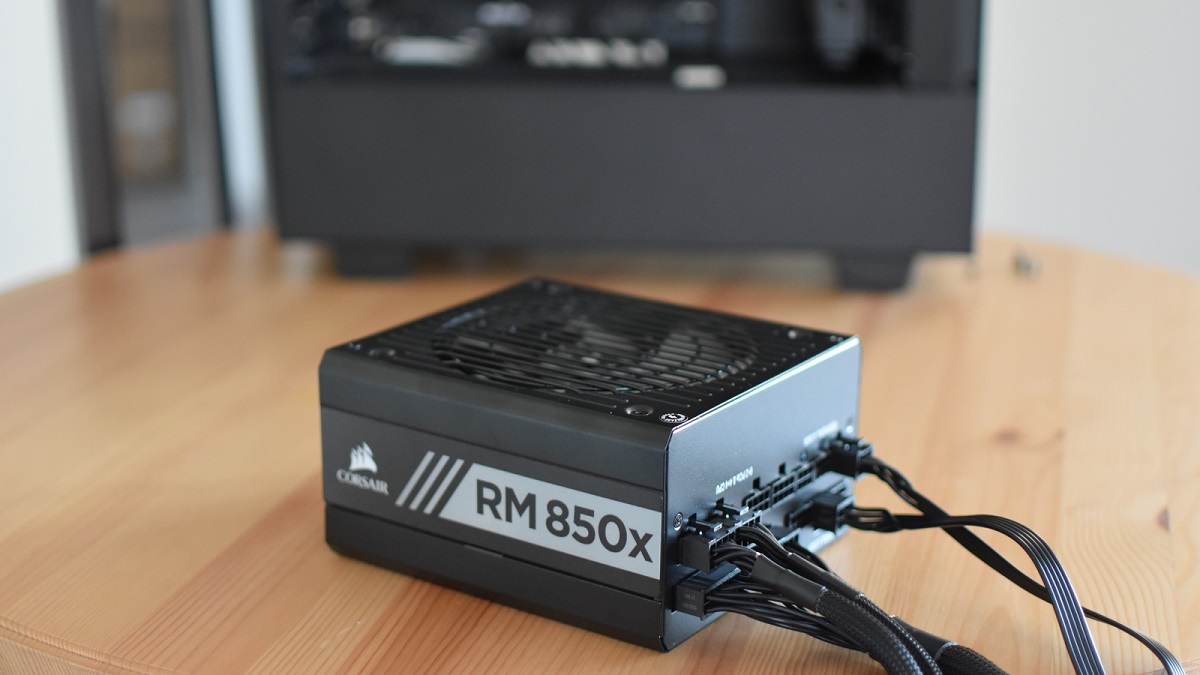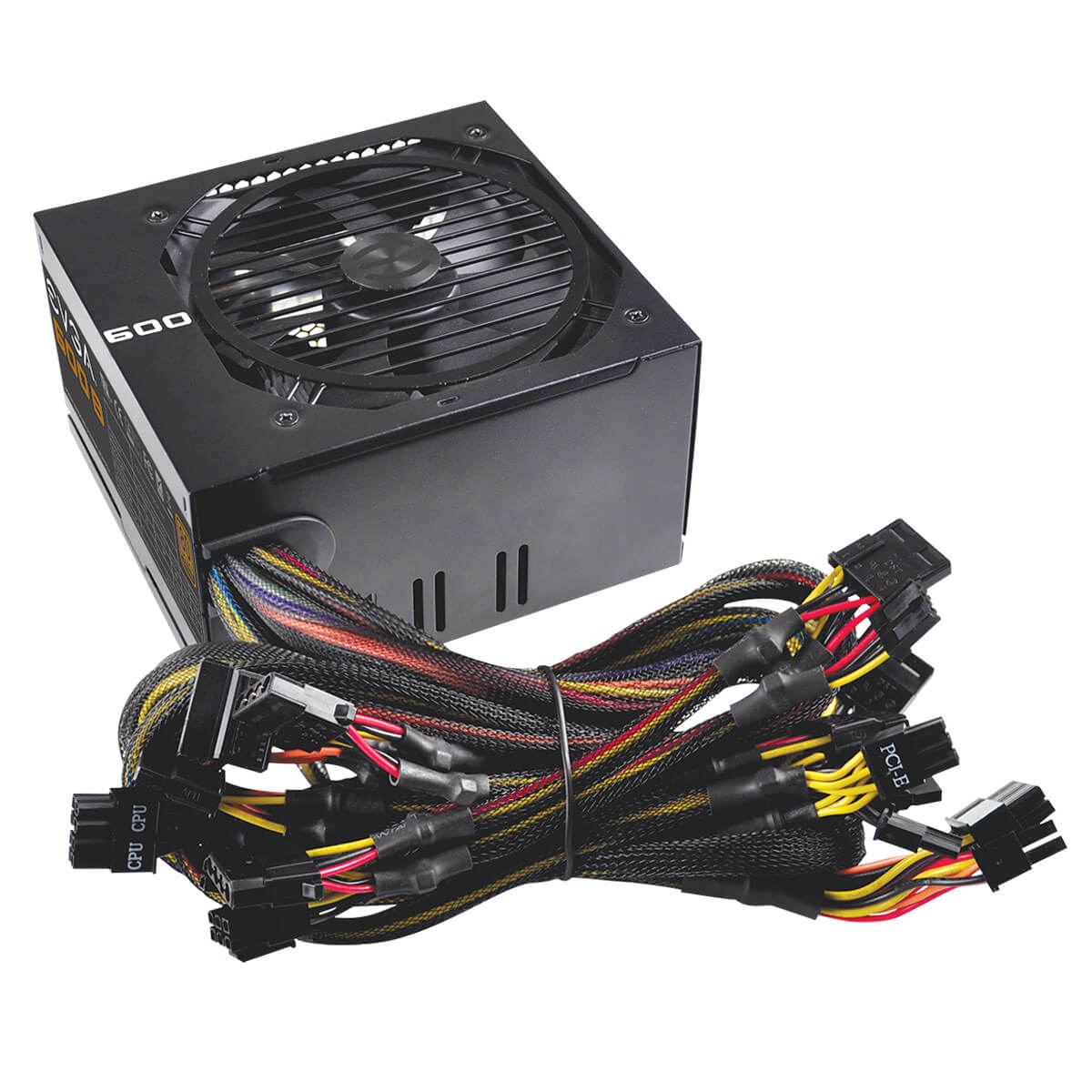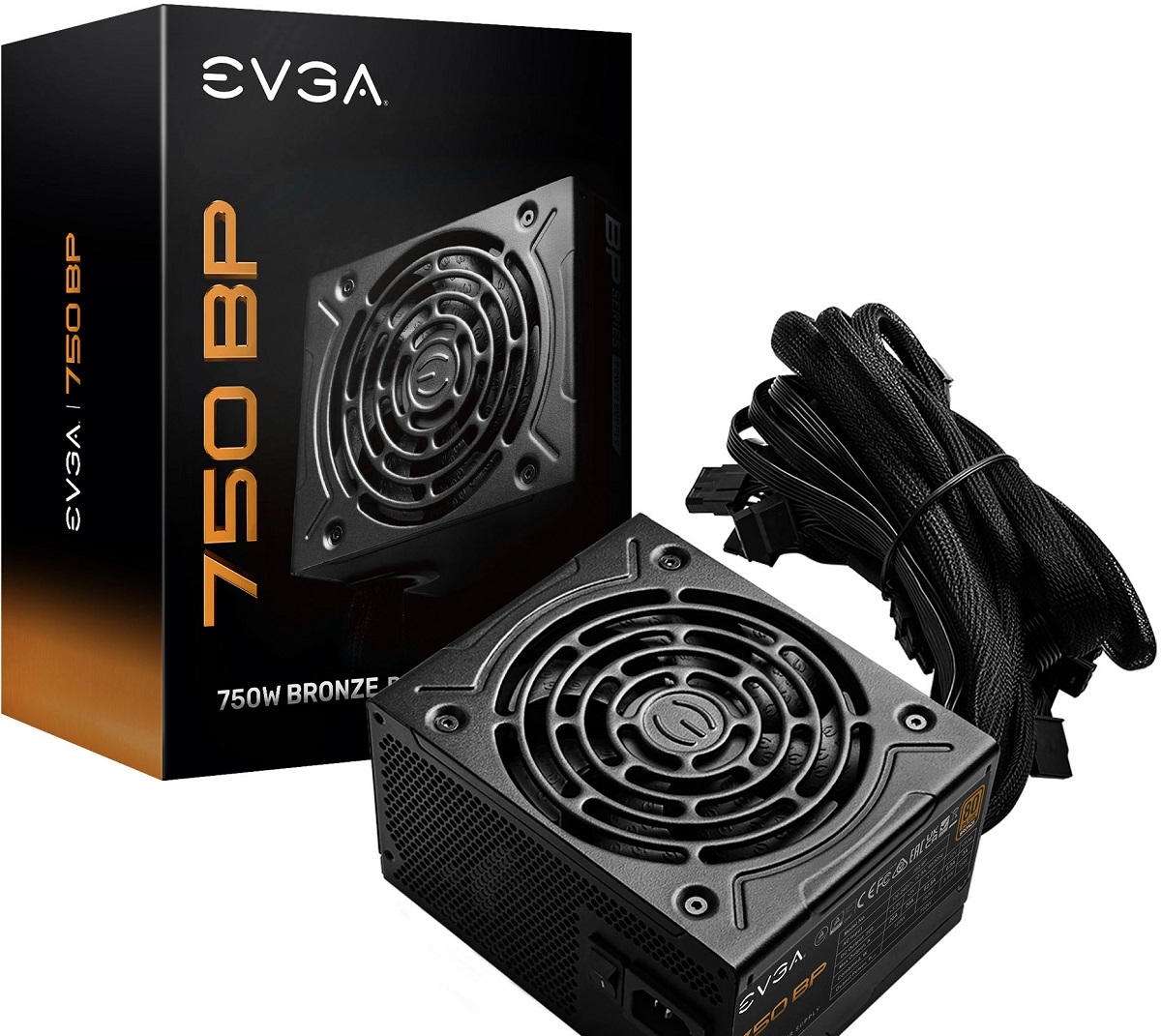Introduction
One of the essential components of a computer system is the power supply unit (PSU). It is responsible for supplying the necessary electrical power to all the components of the system. It goes without saying that having a properly functioning PSU is crucial for the stability and performance of your PC.
However, many PC users often find themselves wondering if their PSU is sufficient for their system’s needs. Inadequate power supply can lead to system instability, random crashes, and even damage to the components. Therefore, it is essential to understand how to determine if your PSU is enough for your setup.
In this article, we will explore the various factors you need to consider to ensure that your PSU is providing sufficient power to your computer components. We will guide you through the process of checking your PSU wattage, calculating power requirements, understanding efficiency ratings, evaluating amperage on the 12V rail, and checking compatibility with your components.
Whether you are planning to build a new PC or upgrade your existing one, understanding the power supply requirements will help you make informed decisions. So, without further ado, let’s dive into the details and learn how to know if your PSU is enough for your computer system.
Factors to Consider
When assessing whether your PSU is sufficient for your computer system, there are several factors you need to take into consideration. These factors will help you determine if your PSU can meet the power demands of your components. Let’s explore these factors in more detail:
- Power Consumption of Components: Each component in your PC, such as the CPU, GPU, RAM, and storage drives, has a power consumption rating. It is essential to consider the combined power requirements of all these components to ensure that your PSU can handle the load.
- Overclocking: If you plan to overclock your CPU or GPU, it will increase their power consumption. Overclocking can put additional strain on the PSU, so you need to account for the increased power demands when assessing its sufficiency.
- System Stability: A PSU operates most efficiently when it is not operating at its maximum capacity. It is generally recommended to have some headroom in your PSU’s wattage capacity to ensure stable power delivery. It is advisable to aim for a PSU that can provide around 20-30% more power than your system’s estimated requirements.
- Modularity: Modular PSUs allow you to connect only the cables that are necessary for your system, reducing clutter and improving airflow. However, keep in mind that modular PSUs may have a slightly lower maximum power output due to the additional connectors and circuitry.
- Brand and Quality: It is crucial to choose a PSU from a reputable brand known for producing reliable and high-quality units. A cheap and poorly made PSU might not be able to deliver the power it claims, potentially causing instability and damage to your components.
Considering these factors will give you a better understanding of whether your PSU is sufficient for your computer system. In the following sections, we will discuss how to check your PSU wattage, calculate your power requirements, evaluate the efficiency rating, and ensure compatibility with your components.
Checking Your PSU Wattage
Before determining if your PSU is sufficient for your computer system, you need to know its wattage rating. This information can usually be found on a label attached to the PSU itself. If you are unable to locate the label or need to verify the wattage, you can also check the specifications provided by the manufacturer or the retailer where you purchased it.
Once you have identified the wattage rating, it is essential to compare it against the power requirements of your components. Start by making a list of all the components in your PC, including the CPU, GPU, motherboard, RAM, storage drives, and any additional peripherals such as fans and lighting.
Next, research the power consumption of each component. Manufacturers often provide this information in their product specifications or user manuals. In some cases, you may need to search online for power consumption figures based on the specific model of the component.
Add up the power consumption figures of all your components to get an estimate of your system’s total power requirements. Remember to consider any overclocking or additional power demands that may arise from connected peripherals.
Once you have the total power requirement, compare it to the wattage rating of your PSU. If the wattage rating of your PSU is higher than the power requirement of your components, your PSU should be sufficient for your system. However, keep in mind that having a higher wattage PSU than necessary may result in inefficiency and higher energy costs.
If the wattage rating of your PSU is lower than the power requirement of your components, you may need to consider upgrading to a higher wattage PSU to ensure there is enough power for your system.
Remember that the wattage rating is not the only factor to consider when evaluating the sufficiency of your PSU. In the following sections, we will explore other important factors to help you make an informed decision.
Calculating Your Power Requirements
To accurately determine if your PSU is enough for your computer system, it is essential to calculate your power requirements. This involves estimating the power consumption of each component in your PC and adding them together to get the total power needed.
Here are the steps to calculate your power requirements:
- Consult Component Specifications: Refer to the manufacturer’s specifications or user manuals for each component to find the power consumption figures. These figures are often provided in watts (W) or amperes (A).
- Gather the Power Consumption Figures: Make a list of all the components in your system and note down their power consumption figures. Include the CPU, GPU, motherboard, RAM, storage drives, cooling fans, and any other components that draw power.
- Consider Idle and Load Power Consumption: Keep in mind that components can have different power consumption levels when idle or under load. For example, a GPU may draw more power during heavy gaming sessions than during normal desktop usage. Consider both the idle and load power consumption to get a more accurate estimate.
- Account for Multiple Components: If you have multiple components of the same type, such as multiple storage drives or graphics cards, you need to add up their power consumption figures. Ensure you calculate the combined power requirements for these components.
- Add Up the Power Consumption Figures: Sum up the power consumption figures of all the components to get the total power requirement for your system.
Once you have calculated the total power requirements, compare them to the wattage rating of your PSU. If the wattage rating of your PSU is equal to or higher than the calculated power requirements, your PSU should be sufficient. However, if the wattage rating is lower, you may need to consider upgrading to a higher wattage PSU to ensure proper power delivery.
Keep in mind that these calculations provide an estimate of your power requirements based on the components’ power consumption figures. It is always a good idea to leave some headroom for future upgrades or additions to your system, ensuring long-term compatibility and stability.
In the following sections, we will discuss additional factors, such as PSU efficiency ratings, amperage on the 12V rail, and component compatibility, to help you make an informed decision about your PSU’s sufficiency.
Determining the Efficiency Rating
When assessing the sufficiency of your PSU, it is important to consider its efficiency rating. PSU efficiency refers to how effectively it converts the electricity from the wall socket into usable power for your components. A higher efficiency rating indicates less wasted energy and better performance.
PSU efficiency is typically measured and classified using the 80 PLUS certification system, which includes various levels of efficiency:
- 80 PLUS: This is the basic level of certification and indicates a minimum efficiency of 80% at 20%, 50%, and 100% load.
- 80 PLUS Bronze: PSU with this certification has an efficiency of at least 82% at 20%, 85% at 50%, and 82% at 100% load.
- 80 PLUS Silver: PSU with this certification has an efficiency of at least 85% at 20%, 88% at 50%, and 85% at 100% load.
- 80 PLUS Gold: PSU with this certification has an efficiency of at least 87% at 20%, 90% at 50%, and 87% at 100% load.
- 80 PLUS Platinum: PSU with this certification has an efficiency of at least 90% at 20%, 92% at 50%, and 89% at 100% load.
- 80 PLUS Titanium: PSU with this certification has an efficiency of at least 90% at 20%, 94% at 50%, and 90% at 100% load.
When determining the efficiency rating, keep in mind that a higher-rated PSU will not directly affect its sufficiency for your system. However, a higher efficiency rating indicates that the PSU operates more efficiently, generating less heat, and reducing energy consumption.
A more efficient PSU can benefit you in the long run by reducing electricity costs and improving the overall lifespan of your components. Additionally, a high-efficiency PSU may provide better stability and voltage regulation under heavy loads.
It is important to select a PSU that balances both wattage requirements and efficiency to meet your needs. Consider your power consumption calculations and compare them with efficiency ratings to make an informed decision.
In the next sections, we will discuss other factors, such as evaluating the amperage on the 12V rail, understanding PSU connectors, and ensuring compatibility with your components to further assess the sufficiency of your PSU.
Considering Future Upgrades
When evaluating the sufficiency of your PSU, it is crucial to consider any future upgrades or additions you may make to your computer system. Upgrading components, such as adding a more powerful graphics card or increasing the number of storage drives, can significantly increase the power requirements of your system.
To ensure that your PSU can handle future upgrades, you need to factor in the potential power requirements of the components you plan to add. Research the power consumption figures for these components and add them to your current power requirements calculation.
It is recommended to have some headroom in your PSU’s wattage capacity to accommodate future upgrades. A general guideline is to aim for a PSU that can provide around 20-30% more power than your current system’s estimated requirements.
By considering future upgrades, you can ensure that your PSU will be able to handle the increased power demands without the need for an immediate upgrade. This allows for greater flexibility and saves you from potential hassle and additional expenses in the future.
Another approach to future-proofing your power supply is considering modular PSUs. Modular PSUs allow you to add or remove cables as needed, reducing clutter and improving airflow. This flexibility can be particularly helpful when upgrading or adding components that require additional power connectors.
Remember to keep your budget in mind when considering future upgrades. While it may be tempting to purchase a high-wattage PSU to accommodate any future components, it’s important to strike a balance between your current needs and future aspirations. Avoid excessive overspending on a PSU that is significantly more powerful than what your current and future system requires.
Considering future upgrades is an essential aspect of determining the sufficiency of your PSU. By preparing for potential power requirements and being conscious of your budget, you can make a more informed decision and ensure that your PSU is ready to handle any future improvements to your computer system.
In the next sections, we will delve into evaluating the amperage on the 12V rail, understanding PSU connectors, and checking compatibility with your components to further assess the sufficiency of your PSU.
Evaluating the Amperage on the 12V Rail
When assessing if your PSU is sufficient for your computer system, it is important to evaluate the amperage on the 12V rail. The 12V rail is crucial for providing power to components such as the CPU, GPU, and other power-hungry devices.
The amperage on the 12V rail indicates the maximum amount of current that the PSU can deliver to these components. It is typically provided on the PSU’s label or in the specifications. To evaluate the amperage on the 12V rail, follow these steps:
- Locate the Amperage Rating: Check the PSU’s label or its documentation for the amperage rating on the 12V rail. It is usually expressed in amperes (A) or milliamperes (mA).
- Consider the Combined Amperage: If your PSU has multiple 12V rails, you need to consider their combined amperage. Some PSUs distribute the power across multiple rails to provide better efficiency and stability. Ensure that the combined rating is sufficient for your system’s needs.
- Compare with Component Requirements: Research the amperage requirements of your components, especially power-hungry ones like the CPU and GPU. These requirements are often provided in the component’s specifications or user manuals. Ensure that the amperage on the 12V rail is equal to or higher than the requirements of your components.
- Ensure Adequate Headroom: Similar to overall wattage requirements, it is advisable to have some headroom in terms of amperage on the 12V rail. This allows for stable power delivery, especially during peak usage or when overclocking components.
If the amperage on the 12V rail meets or exceeds the requirements of your components, your PSU should be sufficient to power them. However, if it falls short or is close to the limits, it might be worth considering a PSU with a higher amperage rating to ensure a stable power supply.
Evaluating the amperage on the 12V rail is an important step in assessing the sufficiency of your PSU. Along with other factors, such as wattage, efficiency rating, and future upgrades, it helps ensure that your computer system receives adequate and stable power to perform optimally.
In the next sections, we will discuss understanding PSU connectors, checking compatibility with your components, and providing recommendations for different PC builds to further assist you in determining the sufficiency of your PSU.
Understanding the PSU Connectors
When evaluating the sufficiency of your PSU, it is essential to understand the different connectors it comes with and ensure they are compatible with your components. PSU connectors are used to supply power to various parts of your computer system, such as the motherboard, CPU, GPU, storage drives, and other peripherals.
Here are some of the common PSU connectors you should be familiar with:
- 24-pin ATX Connector: This connector provides power to the motherboard and is a standard feature on most modern PSUs. Ensure that your motherboard has a compatible 24-pin ATX power socket to connect to the PSU.
- 8-pin/4-pin EPS Connector: This connector is used to power the CPU. It is typically an 8-pin connector, but some motherboards may require only a 4-pin connector. Make sure your motherboard and CPU require the same type of EPS connector.
- PCIe Connectors: These connectors are used to supply power to the graphics card. Most modern graphics cards require one or more 6-pin or 8-pin PCIe connectors. Check your graphics card’s specifications to determine the required PCIe connectors and ensure your PSU has them.
- SATA Connectors: These connectors are used to supply power to SATA-based storage drives, such as SSDs and HDDs. Ensure that your PSU has enough SATA connectors to accommodate all your storage devices.
- Peripheral Connectors: These connectors, also known as Molex connectors, are used to power devices such as fans, RGB lighting, and older peripherals. Although not as commonly used as before, it is still important to ensure that your PSU has enough peripheral connectors to support any legacy devices or additional peripherals you plan to connect.
- Floppy Connectors: These connectors are mostly obsolete as floppy drives are rarely used in modern systems. However, if you have any legacy devices that require floppy power connectors, check if your PSU has them.
It is crucial to ensure that your PSU has the necessary connectors to power all your components. Before purchasing or installing a new PSU, carefully check the connector compatibility with your motherboard, CPU, graphics card, and other components.
Additionally, consider the number and length of the included cables. Ensure that the cables are long enough to reach your components and that you have enough connectors to accommodate your setup.
Understanding the PSU connectors and their compatibility with your components is vital for ensuring a successful and efficient power delivery system in your computer. In the following sections, we will discuss checking the compatibility between your PSU and components and provide recommendations for different PC builds to help you make an informed decision about the sufficiency of your PSU.
Checking the Compatibility with Your Components
When determining if your PSU is sufficient for your computer system, it is important to check the compatibility between your PSU and the components in your setup. Ensuring that your PSU is compatible with your components is crucial for proper power delivery and overall system stability.
Here are some key considerations to check for compatibility:
- Form Factor: Ensure that the form factor of your PSU matches the mounting points in your computer case. The most common form factors are ATX, micro ATX, and mini ITX. Make sure that your PSU aligns with the form factor requirements of your case.
- Power Connectors: As discussed in the previous section, verify that your PSU has the necessary connectors to power your components. Check for compatibility with your motherboard, CPU, graphics card, and any other devices that require power connections.
- Power Output: Confirm that the wattage rating of your PSU is sufficient for your system’s power requirements. Ensure that it meets or exceeds the total power consumption of your components, including any potential future upgrades.
- Efficiency and Ratings: Consider the efficiency rating of the PSU and compare it to your requirements. Choose a PSU with a higher efficiency rating if energy consumption and reduced heat output are important to you.
- Size and Clearance: It’s crucial to check if the dimensions of the PSU will fit properly within your computer case. Make sure there is enough clearance for the PSU’s cables and connections to avoid any interference with other components.
By checking the compatibility between your PSU and components, you ensure that you have the necessary power connections and that your system will operate smoothly without any potential power-related issues.
If you are uncertain about the compatibility, consulting the documentation or specifications of your components and PSU is always a good idea. Additionally, reaching out to the manufacturer’s support or seeking advice from knowledgeable sources can help clarify any doubts you may have.
In the next section, we will provide some recommendations for different PC builds to assist you in selecting an appropriate PSU based on your needs and requirements.
Recommendations for Different PC Builds
Choosing the right PSU for your PC build is essential to ensure stable power delivery and optimal performance. The power requirements of your system can vary depending on the components and their levels of power consumption. Here are some general recommendations for different PC builds:
- Basic Office/Gaming PC: For a basic office or entry-level gaming PC with integrated graphics or a low-power dedicated GPU, a PSU with a wattage rating of 400-500 watts should be sufficient. Look for a reliable PSU from a reputable brand to ensure efficiency and stability.
- Mid-Range Gaming PC: For a mid-range gaming PC with a dedicated GPU and a moderately powerful CPU, consider a PSU with a wattage rating of 500-650 watts. This will provide enough power for your components while leaving room for potential upgrades or overclocking.
- High-End Gaming/Content Creation PC: If you have a high-end gaming PC or a system for content creation that includes a powerful CPU and multiple high-performance GPUs, opt for a PSU with a wattage rating of 750 watts or higher. This will ensure adequate power delivery for demanding components and potential future upgrades.
- Mini ITX/Small Form Factor (SFF) PC: When building a compact Mini ITX or Small Form Factor system with limited space, ensure that the PSU you choose has a form factor that fits your case’s requirements. Look for SFX or SFX-L form factor PSUs specifically designed for small enclosures.
- Extreme Overclocking/Future-Proofing: If you plan to heavily overclock your components or want to future-proof your system with the ability to handle high-performance upgrades, consider a high-wattage PSU with at least an 80 PLUS Gold or Platinum efficiency rating. This will ensure sufficient power delivery and efficient operation under demanding conditions.
Remember, these recommendations are general guidelines and should be adjusted based on your specific components and power consumption estimates. It is always recommended to have some headroom in terms of wattage and to consider factors such as efficiency, modular design, and compatibility when selecting a PSU for your specific PC build.
Consulting the recommended power requirements provided by your components’ manufacturers and using online PSU calculators can also assist you in selecting the appropriate PSU wattage for your specific configuration.
By following the recommendations and considering the unique requirements of your PC build, you can choose a PSU that will provide reliable and efficient power to your system.
In the next section, we will conclude the article by summarizing the key points and emphasizing the importance of having a sufficient PSU for your computer system.
Conclusion
Ensuring that your power supply unit (PSU) is sufficient for your computer system is crucial for stable and reliable performance. By considering factors such as PSU wattage, efficiency rating, amperage on the 12V rail, compatibility with components, and future upgrades, you can make an informed decision when selecting a PSU for your PC build.
Checking the wattage rating of your PSU and comparing it to the power requirements of your components is an important initial step. Calculating your power requirements and leaving some headroom for potential upgrades allows for stable power delivery and future-proofing.
Understanding the efficiency rating of your PSU helps optimize energy consumption, reduce heat output, and improve overall performance. Evaluating the amperage on the 12V rail ensures that your PSU can provide sufficient power to components that require high current draw, such as the CPU and GPU.
Examining the compatibility between your PSU and components, including connectors, form factor, and clearance considerations, is vital for proper installation and functionality. Additionally, considering future upgrades and selecting a PSU with a higher efficiency rating can provide flexibility and cost savings in the long run.
Finally, following recommendations based on different PC builds helps give you a starting point when selecting a PSU, taking into account the specific power requirements of your components and usage scenarios.
By paying attention to these key factors and making a well-informed decision, you can ensure that your PSU is sufficient for your computer system, providing reliable power and optimal performance for your needs.







